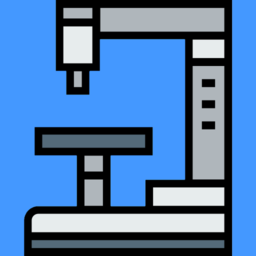 |
BioGTK
6.3.0
A .NET library & program for annotating, editing various microscopy imaging formats using Bioformats supported images. Including whole slide, pyramidal, and series.
|
 |
BioGTK
6.3.0
A .NET library & program for annotating, editing various microscopy imaging formats using Bioformats supported images. Including whole slide, pyramidal, and series.
|
Public Member Functions | |
| Transforms (int target_length) | |
| float[] | ApplyImage (Bitmap b) |
| PointPromotion | ApplyCoords (PointPromotion org_point, int orgw, int orgh) |
| BoxPromotion | ApplyBox (BoxPromotion org_box, int orgw, int orgh) |
Definition at line 14 of file Transforms.cs.
| BioGTK.Transforms.Transforms | ( | int | target_length | ) |
Definition at line 16 of file Transforms.cs.
| BoxPromotion BioGTK.Transforms.ApplyBox | ( | BoxPromotion | org_box, |
| int | orgw, | ||
| int | orgh ) |
The function ApplyBox takes a BoxPromotion object, along with its original width and height, and applies coordinate transformations to return a new BoxPromotion object.
| BoxPromotion | The BoxPromotion class represents a box with coordinates for the top-left and bottom-right corners. |
| orgw | The orgw parameter represents the original width of the box. |
| orgh | The parameter "orgh" represents the original height of the box. |
Definition at line 148 of file Transforms.cs.
| PointPromotion BioGTK.Transforms.ApplyCoords | ( | PointPromotion | org_point, |
| int | orgw, | ||
| int | orgh ) |
The function takes in a point and its original width and height, applies a scaling factor based on a target length, and returns a new point with adjusted coordinates.
| PointPromotion | PointPromotion is a class that represents a point with additional properties related to promotions. It has properties like X and Y coordinates, and an Optype property. |
| orgw | The original width of the shape. |
| orgh | The parameter "orgh" represents the original height of the shape. |
Definition at line 126 of file Transforms.cs.
| float[] BioGTK.Transforms.ApplyImage | ( | Bitmap | b | ) |
The function takes a BioImage object, resizes it, calculates the mean and standard deviation of each channel, and returns a transformed image.
| BioImage | The BioImage parameter represents an image object that contains the image data. It likely has properties such as SizeX and SizeY, which represent the width and height of the image, respectively. |
Definition at line 29 of file Transforms.cs.